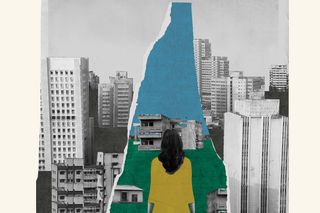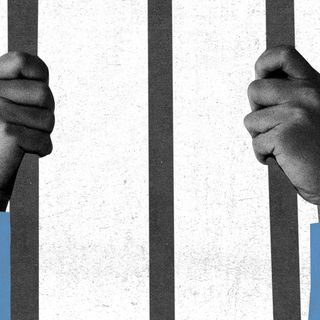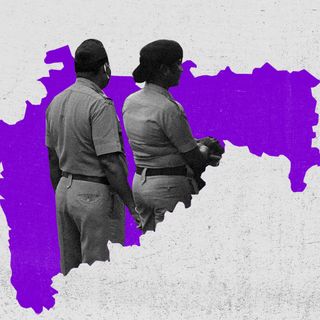
Urban Villages of India Are Being Erased by Development. How Can We Preserve Their Histories?
Stories from those at the periphery of cities are at risk of disappearing forever, if not recorded and archived for posterity.

Throughout my school years, I was ashamed of my home address. Every time my friends would ask where I lived, I would say “Malviya Nagar,” a partition refugee colony in South Delhi, instead of my real address, Khirki Village. It is a densely populated urban village situated next to Malviya Nagar. Even on the rare occasions, my young self could muster up the courage of saying “I live in Khirki Village,” it would be followed by taunts and mocking: “There are villages in Delhi? Do you have buffaloes? You are a gaonwala (villager)? Is that why you can’t speak English?”
As a result, most of my childhood was spent trying to find out why my address had a “Village” in it and why “Colonies” were supposedly better. My search for these answers led me to discover the importance of oral histories.
***
The “modern” and “posh” colonies of Delhi are often surrounded by rather haphazard settlements, where people still follow a caste order and raise cattle and the women dress conservatively. They celebrate harvest festivals and visit tiny shrines of local land deities, which are remnants of their agricultural past.
Delhi is home to 362 of these urban villages, each with its unique story. With the rising pressure on land, these urban villages have increasingly attracted attention from politicians, real estate builders as well as scholars of political economy. However, the everyday lives of the communities stuck in this rural-urban conundrum seldom receive any attention.
Although there is no dearth of scholarly research and historical record on the city of Delhi, a comprehensive social history of its urban villages remains elusive.
As most of these communities have a low level of literacy, there are barely any tangible or written records of their past, except for a few family genealogies, photographs, and legal documents. These materials, however, cannot be understood in isolation and there is a need for active involvement of community members — especially the elders — to interpret these sources and understand the rich history of these villages.
***
In history textbooks, oral history finds a passing mention along with the more “established” and “scientific” sources, such as inscriptions, archaeological remains, or coins. While these are essential to reconstructing the past, they paint a picture of the rulers and noblemen; ultimately, those who commanded the resources required to leave behind traces of their lives. These “elite” sources allow only a limited and fragmented understanding of the masses or, what anthropologist Eric Wolf called, “people without a history.”
This is where oral history comes in. It allows for moving away from looking at the extraordinary remains of the past to finding the extraordinary in the ordinary. Interview-based oral history works by understanding the value of juxtaposing personal stories with contemporary historical events. For example, various generations of Khirki village talk about their different memories of the Satpula Lake, a 14th-century Tughlaq water harvesting dam. When mapped chronologically, these everyday stories overlap with the growing groundwater crisis in the city and allow one to obtain a comprehensive picture of water, land, and irrigation policies and politics since the 1940s.
Related on The Swaddle:
Oral history is perhaps the only discipline where the source talks back to the historian; the historian is transformed into a character in the story who is continuously being challenged by the source. Oral histories, thus, democratize historical narrative. By moving away from the hegemonic narratives and written sources, one can draw a layered and complex picture of the past. Projects archiving personal stories of partition survivors, for example, have brought to light accounts of personal tragedies, friendship, love, and loss. This has made people look at the event through a human lens rather than just as a political event. Both India and Pakistan now have archival organizations and museums that focus on oral accounts of ordinary citizens of the time. The COVID-19 pandemic has also renewed the interest in archiving and understanding personal oral histories especially among young adults trying to make sense of a world constantly in flux.
***
Khirki Village is a small community of around 90 families, residing in the heart of Delhi and yet carrying their age-old customs, beliefs, and practices. According to the village’s traditional record keeper, a man called Khoobi Singh migrated from Madhya Pradesh to Delhi along with his brothers in the 12th century and the current residents of the village trace their ancestry to him. For the last 900 years, the community has occupied the same space, witnessing the rise and fall of empires, the independence of the nation, and the emergence of a modern state.
Those caught in this whirlwind of urbanization tell tales about how the first electric street light was installed, how the residents negotiated with the then-PM Jawaharlal Nehru to not turn Khirki Masjid into a refugee camp, the changes brought about in women’s mobility with the introduction of the first bus service, local community theatre, and so on.
My search for voices from the margins, as part of my archival project “Dilli ki Khirki,” led me to Mr. Puran Singh, a 90-year-old who still works as a gardener. And thus, after 27 years of living in Khirki village, I finally entered the street assigned to the Dalit community. The only memory I had of that street was how we used to be reprimanded for taking that route to school by our grandparents. My four-hour-long interview with Puran baba revealed first-hand information about his community’s struggles with untouchability and stigma — segregation of living spaces and resources (such as the village well till it was in use), limited access to public spaces, persisting effects of the generational wealth gap, and so on.
Furthermore, it also challenged my privilege and identity. It is stories like his and many others from the margins that are at risk of disappearing forever if not recorded and archived for posterity.
***
Oral history continues to be dismissed as a “soft” approach. Information obtained from “non-expert” interviews is often accused of being subjective and uninformative and thus unable to contribute to any larger narrative of the past. However, subjectivity can hardly be treated as a charge in a discipline like history. Subjectivity warrants a more in-depth analysis of the issue and can bring out more diverse viewpoints. For example, while documenting the land acquisition process of urban villages through oral accounts may be dismissed as personal experiences of individuals, a collective reading of the experience may offer insights into the legal functioning of the state of the time. Establishing the “accuracy” of personal memories is as difficult as determining the accuracy of any other retelling of past events. Thus, training oral historians is essential to ensure that they can record and publish without biases.
Indian historians and institutions are waking up to the potential of oral history as a legitimate source of understanding history. An ever-increasing number of projects are documenting oral knowledge and traditions of previously unexplored social groups, geographical areas, and individuals. This is a promising development in a country where the past is often distorted in the absence of reliable and comprehensive resources to suit the needs of the present. With a more democratic record of diverse voices, one can be hopeful that we are already making sure that our times and our lives are not misrepresented in the future.
Ekta Chauhan is pursuing her Ph.D. in heritage studies. She works on the themes of heritage, communities, and urban development. She runs the project Dilli ki Khirki, in partnership with The Citizens’ Archive of India, to record the personal histories of residents of Khirki Village, New Delhi. She can be found on Twitter @ektac2993.
Related


Trans Persons Should Get Separate Prison Wards, Govt Tells States
